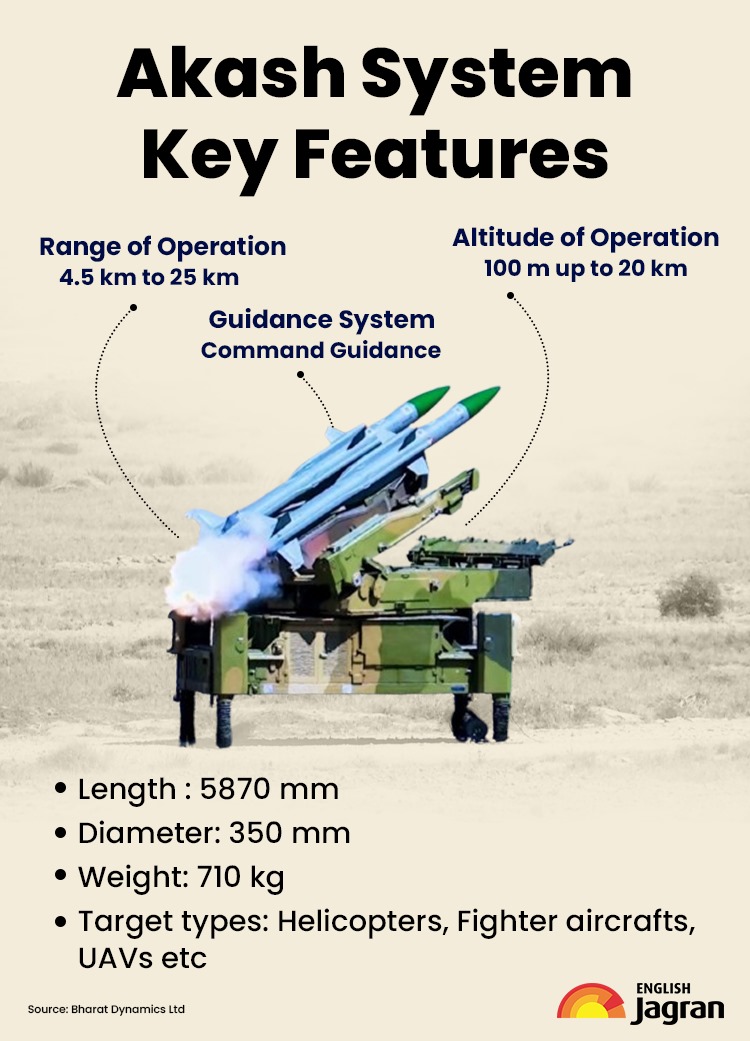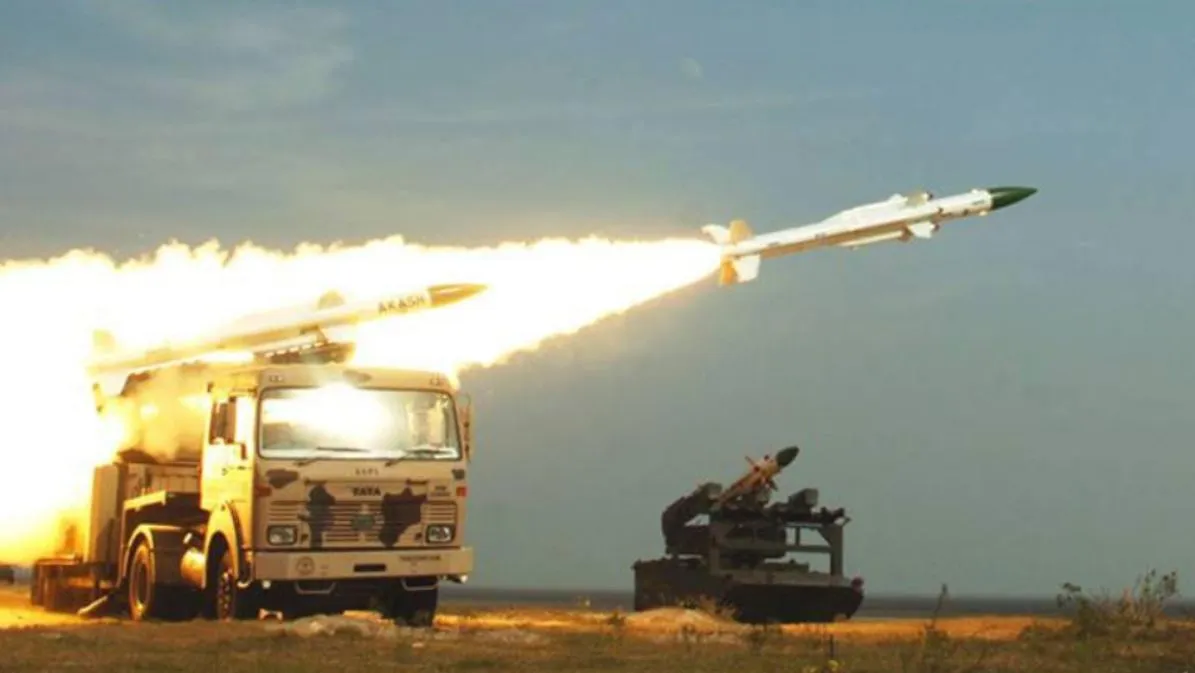- By Akanksha Verma
- Mon, 12 May 2025 05:16 PM (IST)
- Source:JND
India's indigenous air defence system Akash found special mention during the DGMO press conference on Monday as the Indian Armed Forces lauded its "stellar performance" against Pakistan's drone strike. The air defence system was activated on May 8, when Pakistan launched over 300 precision strike missiles towards India. The Akash system successfully intercepted and neutralised the Pakistani drones which filled the skies above the border states of Jammu and Kashmir, Punjab, Rajasthan and Gujarat. The drone attack, which followed India's Operation Sindoor, went on till May 10.
The Indian armed forces carried out Operation Sindoor against terror bases in Pakistan and Pakistan-occupied Jammu and Kashmir (PoJK) on May 7. The precision strikes by India were in response to the April 22 Pahalgam terror attack, which claimed 26 lives.
Air Marshal AK Bharti said, "Our battle-proven systems stood the test of time and take them head on. Another highlight has been the stellar performance of the indigenous air defence system, the Akash system. Putting together and operationalising the potent AD environment has been possible only because of budgetary and policy support from the government of India in the last decade."
DGMO Lieutenant General Rajiv Ghai on Monday compared India’s robust multi-layered air defence system to the legendary Australian bowling attack of the 1970s, calling it too tough for Pakistani drones to penetrate. Speaking alongside IAF's Air Marshal AK Bharti and Navy’s Vice Admiral AN Pramod during a special briefing, he explained how the system successfully deterred Pakistani drones and missiles during Operation Sindoor. Referring to Virat Kohli’s retirement from Test cricket, Ghai said Kohli was his favourite and quoted the famous Ashes saying to illustrate how India’s air defence ensures at least one layer will always strike intruders. “Ashes to ashes, dust to dust, if Thomson don't get ya, Lillee must,” he said.

What Is Akash Air Defence System, Know Key Features
Akash is India’s indigenously developed surface-to-air missile (SAM) system designed to protect against aerial threats such as fighter jets, drones, and cruise missiles. Developed by the Defence Research and Development Organisation (DRDO), Akash has a range of up to 4.5 km to 25 km. This fully automatic made-in-India missile can engage multiple targets simultaneously, in all-weather conditions. It operates on a mobile platform, providing quick deployment capability.
The Akash air defence system is capable of swiftly detecting and neutralising aerial threats. Its open system architecture allows seamless integration with both current and future air defence setups, ensuring long-term adaptability. Akash is built to resist both active and passive jamming, with secured communication links between its combat elements to maintain operational integrity. The system is self-reliant in terms of power, equipped with in-built electrical sources. It includes in-built safety features and Identification Friend or Foe (IFF) capabilities.
Akash is a key component of India’s layered air defence network, offering fast reaction time and accurate target interception. It is currently deployed by both the Indian Army and Indian Air Force.
ALSO READ: Pakistan Acknowledges Jet Damage In Bizarre Response After India’s Claim Of Downing PAF Aircraft
Story Behind Akash Missile System
The air defence system was originally called SAM X and later renamed to 'Akash'. It was former president A P J Abdul Kalam who put together a team for the Integrated Guided Missile Development Programme. Kalam is fondly remembered by the nation as the 'Missile Man of India'.
The indigenous surface-to-air missile system took nearly 15 years to complete, starting from 1983. Former DRDO scientist Prahlada Ramarao, who was the project director, shared the details of the tedious and years-long process behind India's indigenous air defence system. "To make it happen, we had to make hardware, software prototypes, and then test it out. When it didn't work, go back, review the design, change the design and so it went on for two, three iterations. Only after 15 years, we could show that to the reluctant Army, who never really believed we could pull this off," news agency PTI quoted him as saying.
"Earlier, say around 1984-85, Indian industries were doing what is called build to print. Then we moved on to build to design and then build to concept. Now, Indian industries are so smart that they can build, if you just give a concept," he said.

